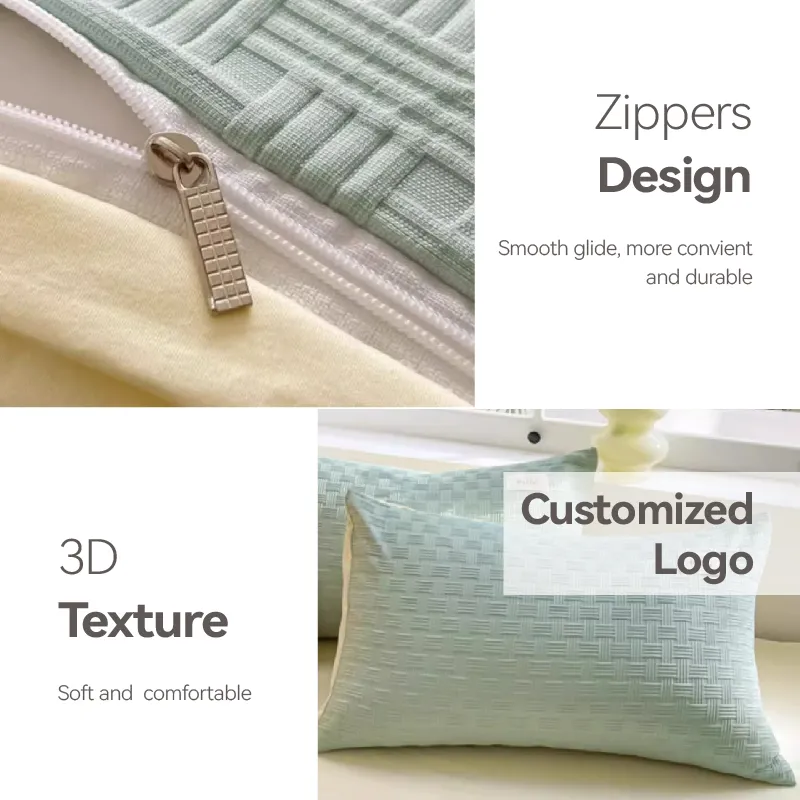The Pros and Cons of Microfiber Pillows
Is a Microfiber Pillow Good or Bad?
Microfiber pillows have gained significant popularity in recent years as an alternative to traditional bedding options. Known for their softness and affordability, these pillows often attract consumers looking for budget-friendly sleep solutions. However, the question arises are microfiber pillows truly good or bad? Let’s explore the various aspects of microfiber pillows to help you make an informed decision.
Comfort and Softness
One of the most significant advantages of microfiber pillows is their softness. Made from ultra-fine synthetic fibers, they provide a plush feel that many find comfortable. For individuals who prefer a pillow that molds to the shape of their head and neck, microfiber can be an excellent choice. Many users report that these pillows allow for varied sleeping positions, making them suitable for side, back, and stomach sleepers alike.
Hypoallergenic Properties
Microfiber is inherently resistant to common allergens like dust mites, mold, and pet dander. For allergy sufferers, this can be a significant benefit, as it may lead to improved sleep quality and reduced allergy symptoms. Unlike traditional down or cotton pillows, microfiber pillows do not retain moisture, which further diminishes the likelihood of allergens developing within the pillow.
Affordability
Another appealing factor is the price. Microfiber pillows are often more budget-friendly compared to natural materials like goose down or high-quality memory foam. This affordability makes them an attractive option for college students, young professionals, or families looking to furnish their homes without breaking the bank.
Durability and Maintenance
microfiber pillow is good or bad

When it comes to maintenance, microfiber pillows are generally easy to care for. Most can be machine washed and dried, which is a significant advantage for those who value convenience. However, their longevity can vary. While some users find that microfiber pillows retain their shape well over time, others report that they flatten out more quickly than traditional pillows, requiring more frequent replacements.
Breathability Issues
One potential downside to microfiber pillows is their breathability. Unlike natural materials like cotton or down, microfiber can sometimes trap heat, leading to discomfort for hot sleepers. This lack of airflow can cause individuals to wake up feeling overheated during the night. If you tend to sleep warm or live in a hot climate, this is a critical factor to consider when choosing a pillow.
Environmental Concerns
It’s essential to consider the environmental impact when evaluating microfiber pillows. Microfiber is a synthetic material, and its production involves using petrochemicals. Additionally, microfiber pillows may contribute to microplastic pollution when washed, as tiny fibers can shed and enter waterways. For environmentally conscious consumers, this aspect may deter them from choosing microfiber options.
Conclusion
Ultimately, whether a microfiber pillow is good or bad depends on individual preferences and needs. For those who prioritize softness, hypoallergenic properties, and affordability, microfiber pillows can be an excellent choice. However, they may not suit everyone, particularly those concerned with breathability and environmental impact. Before making a decision, consider your sleeping style, any allergies you may have, and your commitment to sustainable materials.
In the end, finding the perfect pillow is a personal journey, and weighing the pros and cons of microfiber pillows can help you arrive at the best solution for a good night's sleep.
-
Elevating Comfort and Quality with the Right Bed LinenNewsJul.07, 2025
-
Bedding Essentials: From Percale Sheets to White Quilts, Finding Your Perfect Sleep HavenNewsJul.07, 2025
-
Choosing the Right Bedding for a Comfortable and Stylish BedroomNewsJul.07, 2025
-
Understanding the Diverse World of Towel TypesNewsMay.29, 2025
-
The Ultimate Comfort: Discover the Benefits of Polycotton SheetsNewsMay.29, 2025
-
Experience Luxury with 1800 Brushed Microfiber SheetsNewsMay.29, 2025
-
Elevate Your Sleep with Luxurious Hotel Sheets for SaleNewsMay.29, 2025






